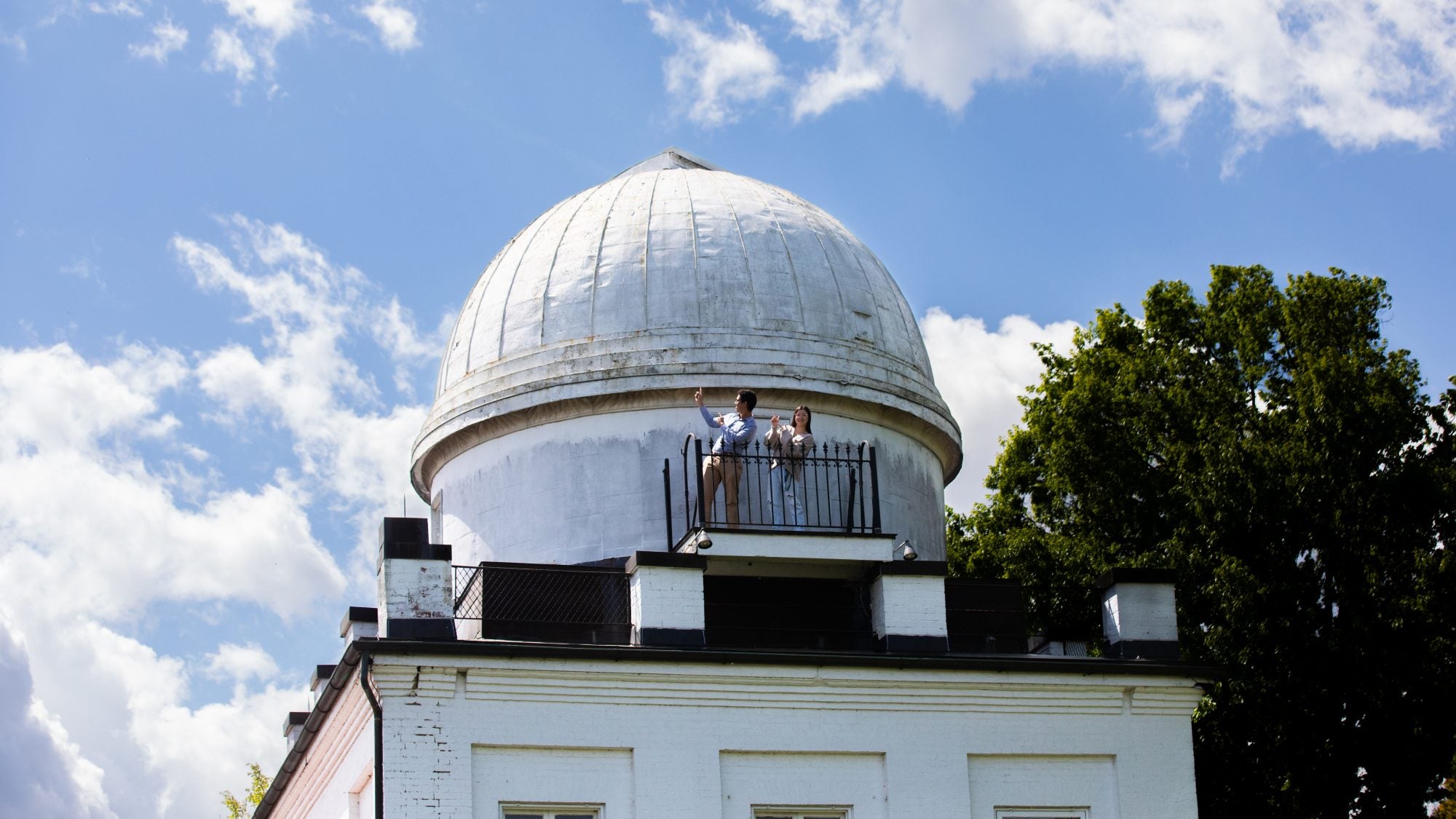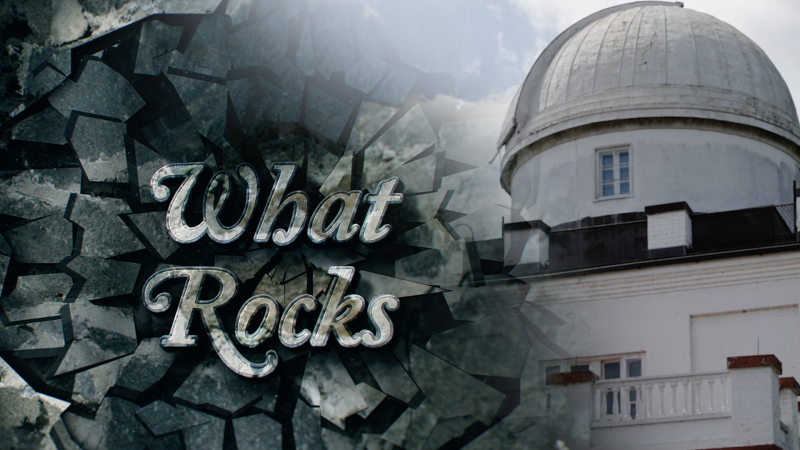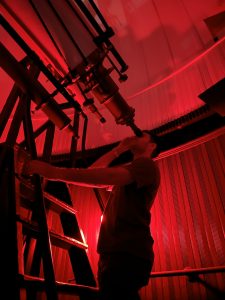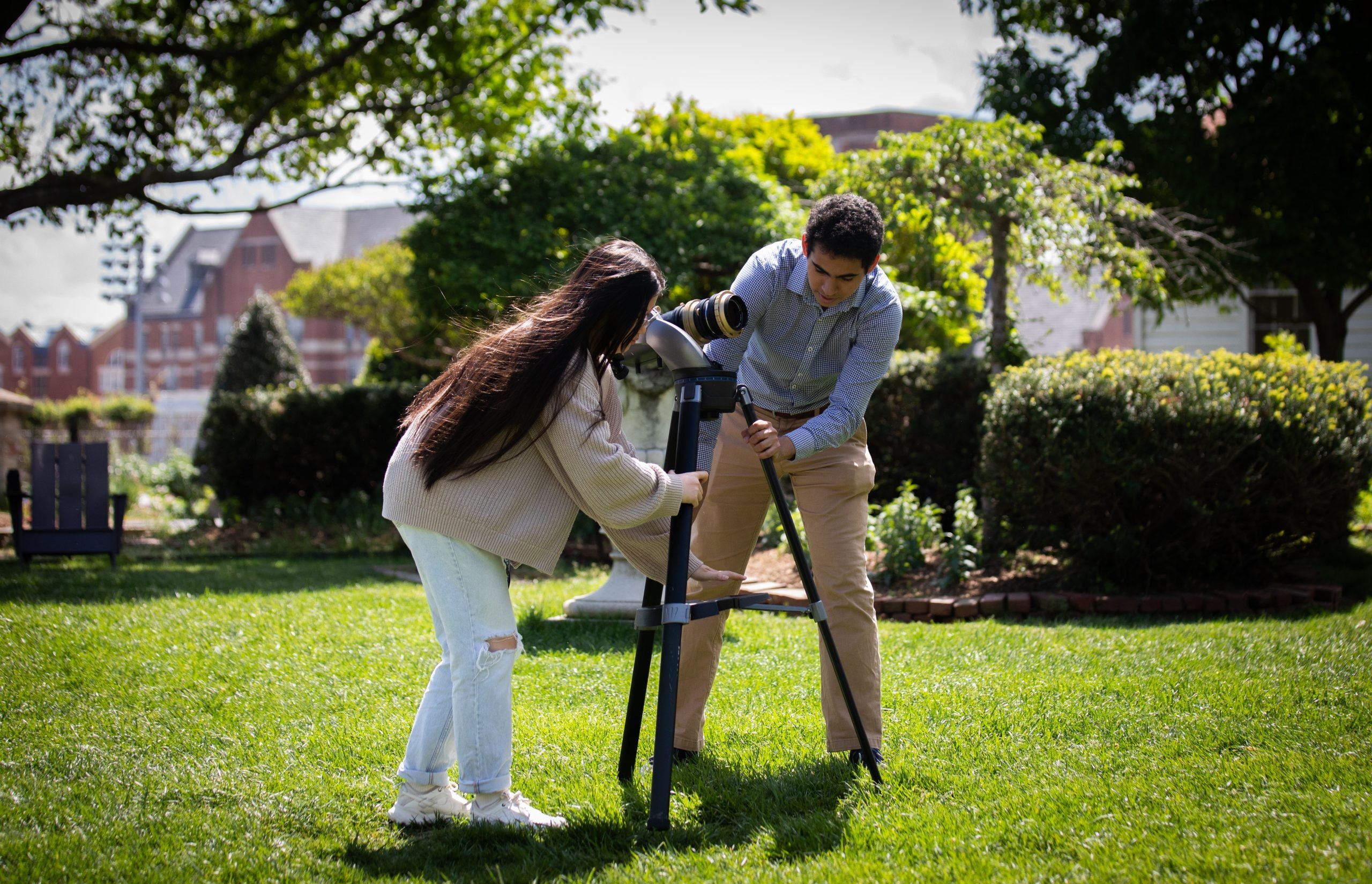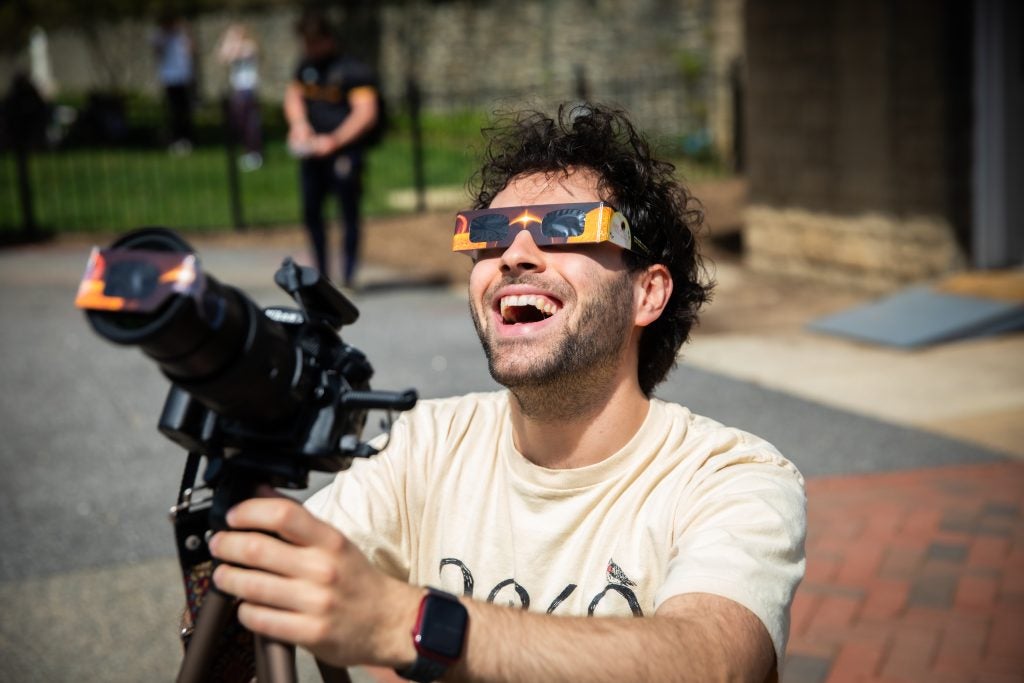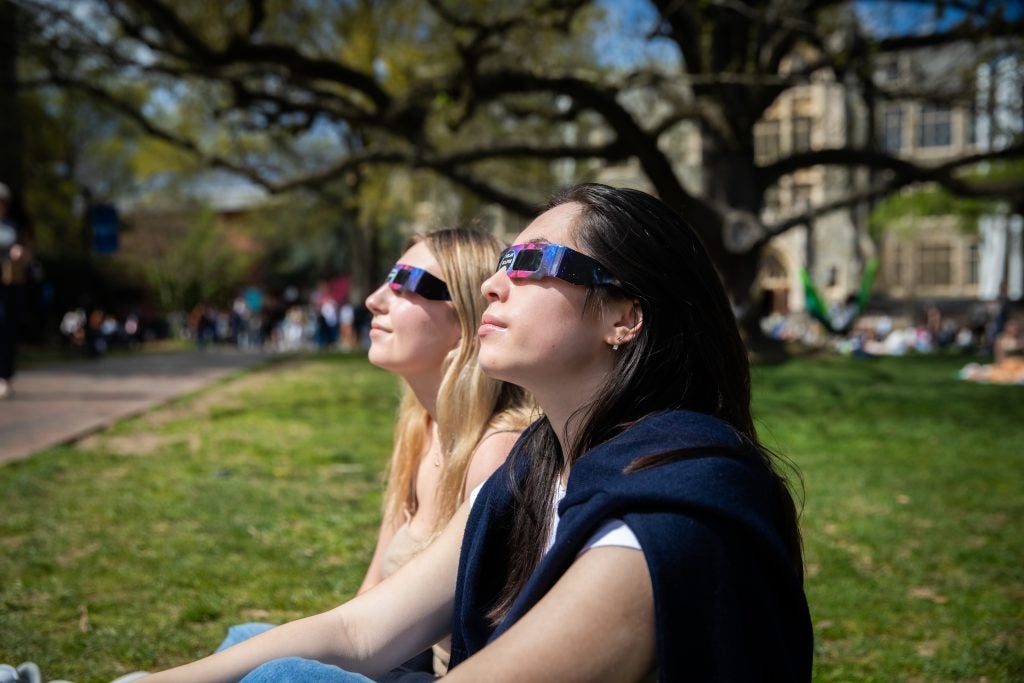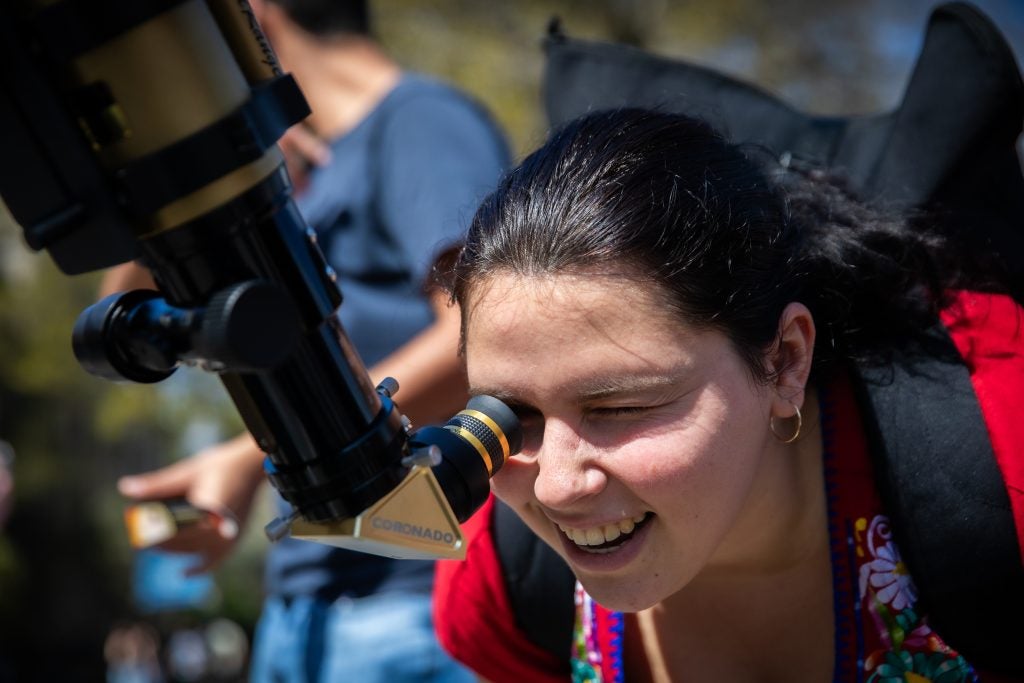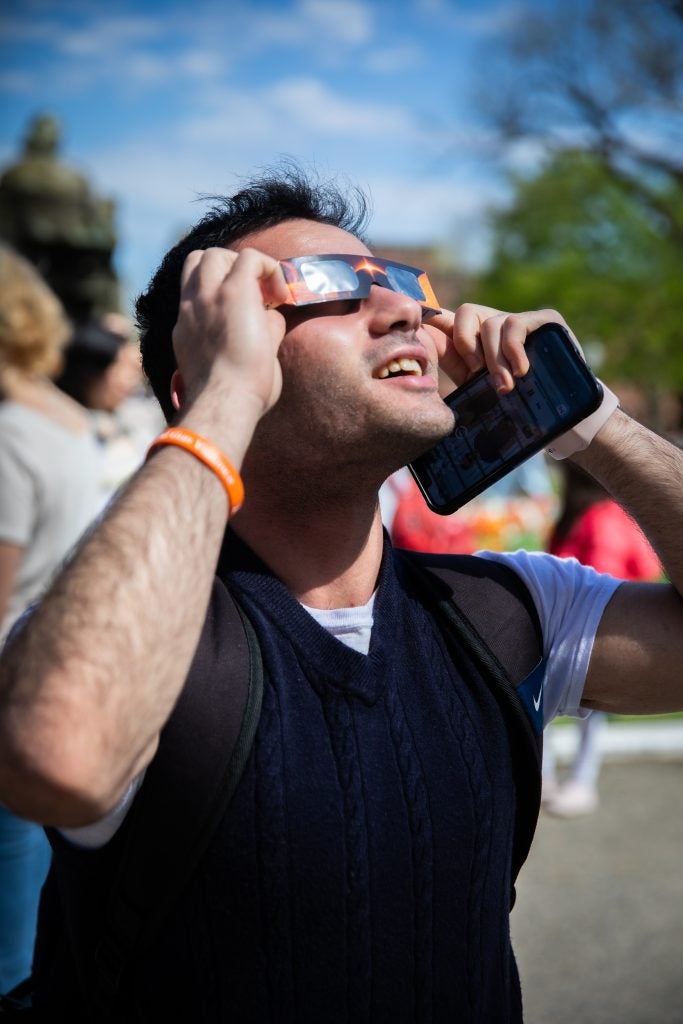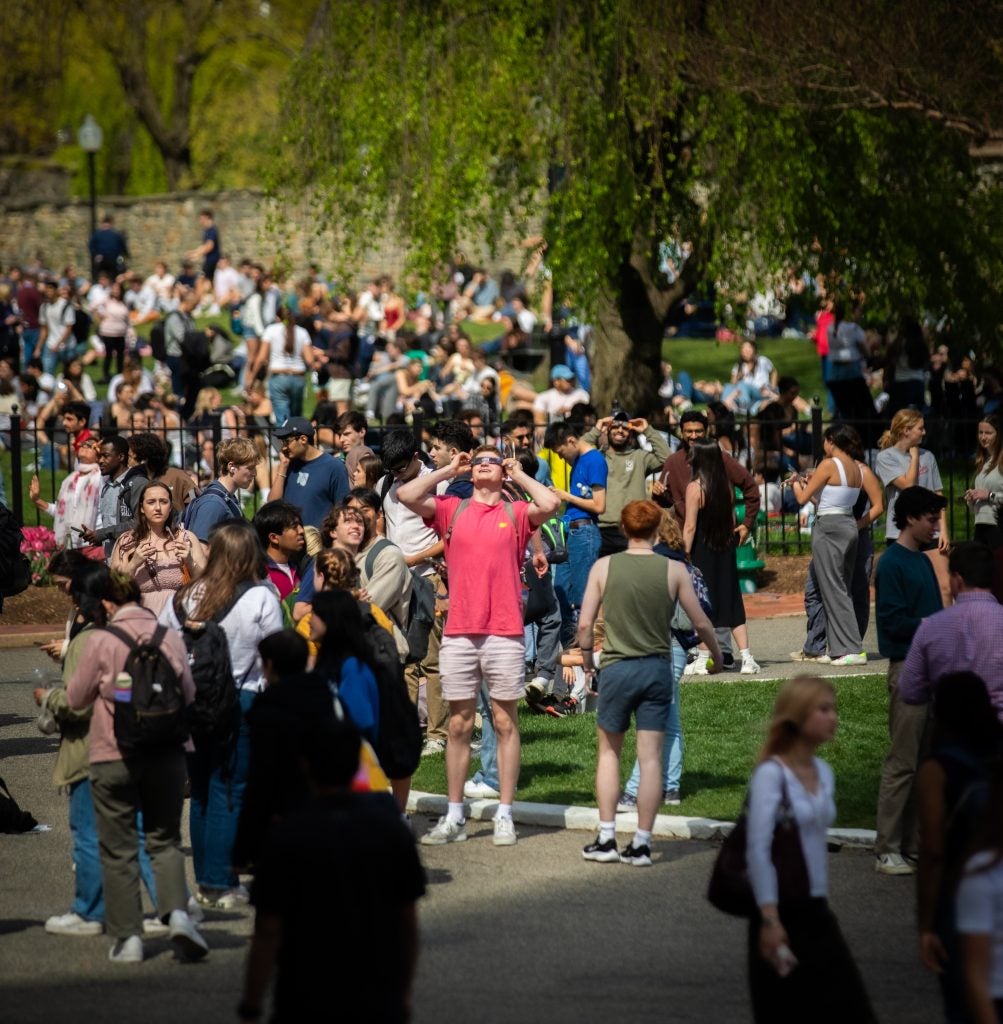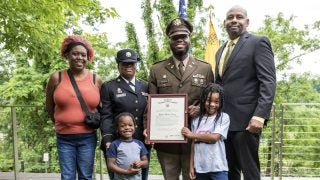On any clear Tuesday night on a hilltop that overlooks the Hilltop, you may notice students gathered outside the Heyden Observatory with telescopes pointed to the heavens.
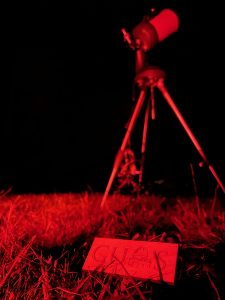
Inside the observatory, dozens of students cram into the small space centered around a massive 12-inch telescope, an over-century-old relic from Georgetown’s golden age in astronomy. A soft red light illuminates the room to preserve students’ night vision.
The students gathered are members of the Georgetown University Astronomical Society. And for the last 52 years, they’ve served as caretakers of the observatory. The Astronomical Society’s primary mission is to maintain the observatory while promoting space awareness and preserving Georgetown’s storied history of pondering the stars.
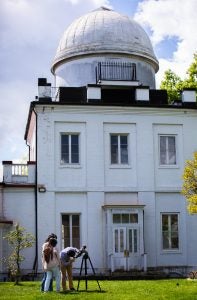
“There’s an inherent curiosity in a lot of Georgetown students to understand what’s going on in the cosmos,” said Sophia Chang (SFS’25, G’26), who serves as the co-president of the club. “From a Georgetown perspective, the intersection of space and international affairs and business is becoming more and more interesting every single day … I think that Georgetown in particular is poised to seize those opportunities.”
Astronomy and space policy were not on Chang’s radar when she came to Georgetown. But after she joined one stargazing session her first year, she was enamored by the observatory’s charm.
“A lot of space people grew up on space. They live, breathe, eat and sleep space. I was not one of those kids,” Chang said. “[But] when I got to the observatory, I just fell in love with it.”
Georgetown’s Rich Space History
For many years, Georgetown’s astronomy department was one of the university’s crown jewels.
At its epicenter was the Heyden Observatory, which is now on the National Register of Historic Places. Founded by Rev. James Curley, S.J., in 1844, the observatory and the astronomy program would help produce some of the brightest astronomers of the 19th and 20th centuries, extending the Jesuits’ longstanding history and fascination with space.
